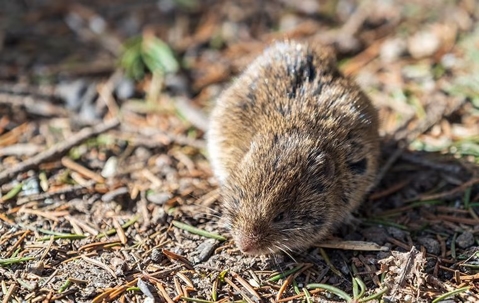Expert Techniques for Vole Control and Prevention
Expert Techniques for Vole Control and Prevention
Blog Article
Comprehensive Guide to Reliable Vole Parasite Control: Invasion Identification and Therapy Approaches
In the realm of efficient parasite control, vole invasions posture a special challenge that demands a critical approach. By checking out the subtleties of vole behavior, comprehending key indications of invasion, and reviewing an array of control options, one can establish a detailed approach to combat these elusive insects.
Comprehending Vole Actions
Vole actions is identified by their burrowing practices and fast recreation prices, making them a tough pest to control successfully. These tiny rats usually produce complex passage systems underground, utilizing them for shelter, food storage, and transportation. Voles are herbivores, taking in a range of plants, light bulbs, yards, and origins, which can cause considerable damage to gardens, orchards, and grass. Their quick reproductive price additional complicates control efforts, with females with the ability of creating several trashes in a single year, each consisting of numerous children.
Voles are most active during the morning and evening hours, spending most of their time foraging for food. Their burrowing behaviors not only disturb lawns and yards however also make them testing to identify and get rid of. Comprehending vole behavior is crucial for reliable bug control techniques. By determining their burrow locations, monitoring feeding locations, and executing targeted control approaches, such as trapping or environment modification, vole problems can be handled effectively.
Indications of Vole Invasion
Prevention Strategies
Implementing effective avoidance methods is critical in decreasing vole invasions and protecting greenery from their destructive feeding habits. To avoid vole invasions, it is vital to start by eliminating potential food resources and sanctuary.
Regularly evaluating the property for signs of vole task, such as paths and tunnel openings, is important for very early discovery and timely activity. If vole activity is believed, consider utilizing catches or repellents purposefully put near their pathways.
Non-Lethal Control Methods
To properly take care of vole populaces while focusing on humane methods, non-lethal control strategies provide useful remedies for minimizing vole damage in landscapes and yards. One reliable approach is the use of physical obstacles such as hardware cloth or wire mesh to secure at risk plants. These obstacles can be hidden a minimum of 12 inches bent and deep at a 90-degree angle to stop voles from tunneling beneath. In addition, environment modification can discourage voles by lowering their preferred food sources and concealing places. Keeping a well-mowed grass, getting rid of particles, and maintaining plant life cut can make the setting much less attractive to voles.

Lethal Control Options
One effective technique for attending to vole problems in landscapes and yards involves the critical use dangerous control options. When encountered with a severe vole invasion that non-lethal techniques have actually failed to consist of, implementing deadly control actions becomes crucial. One frequently used lethal control choice is the use of snap traps. These traps are made to swiftly and humanely eliminate voles upon activation, making them a popular option for numerous garden enthusiasts and landscapers. To increase the efficiency of breeze traps, it is advised to put them in areas where vole task is high, such as along runways or near burrow entrances. An additional lethal control option is the use navigate to this website of toxic baits especially created to target voles. These baits have poisonous substance that is ingested by the voles, causing their ultimate demise. Nevertheless, care must be worked out when using harmful baits to stop injury to non-target pets or pet dogs. In general, when using deadly control options, it is necessary to do so properly and in accordance with regional policies to effectively manage vole infestations.
Conclusion
To conclude, efficient vole pest control needs a thorough understanding of vole behavior, recognition of indicators of infestation, application of avoidance strategies, and application of both lethal and non-lethal control techniques. By integrating these methods, people can efficiently take care of vole populaces and secure their building from damage. It is necessary to resolve vole problems promptly to stop more like it concerns and decrease the influence on the surrounding atmosphere.
Given the complex passage systems and quick recreation rates characteristic of voles, identifying the indicators of vole invasion becomes crucial in reliable insect control. One of the main signs of vole existence is the existence of surface paths or trails in grass or snow, normally concerning 1-2 inches broad, produced as voles travel in between their burrows and food sources.To properly take care of vole populations while focusing on gentle approaches, non-lethal control approaches provide practical remedies for decreasing vole damages in landscapes and yards.One reliable technique for addressing vole problems in landscapes and yards includes the strategic usage of deadly control choices. vole control.In final thought, efficient vole pest control calls for a comprehensive understanding of vole behavior, recognition of indicators of problem, execution of avoidance methods, and use of both non-lethal and lethal control approaches
Report this page